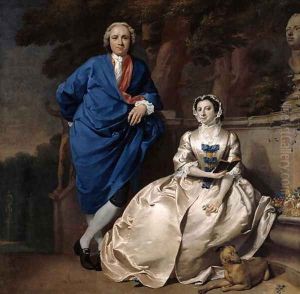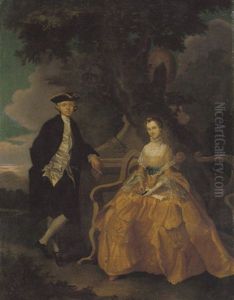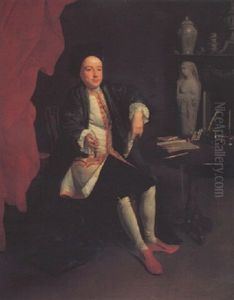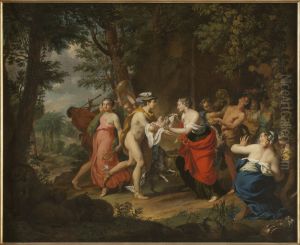Carl Marcus Tuscher Paintings
Carl Marcus Tuscher, also known as Markus Tuscher, was a notable artist of the 18th century, born in Nuremberg, Germany in 1705. His early life is not thoroughly documented, but it is known that he was an orphan and was adopted by the city's executioner, who gave him the name Tuscher. He showed an aptitude for the arts from a young age and went on to study painting.
Tuscher's career took him across various regions of Europe, reflecting the itinerant nature of many artists of the time. He worked in a variety of mediums, including painting, engraving, and architecture, and was also known for his skills in art restoration. His style was influenced by the Baroque and Rococo movements, which were prominent during his lifetime.
In the 1720s, Tuscher left Germany and traveled through Europe. He spent time in Paris, where he was influenced by the works of contemporary French artists, and in Rome, where he studied the Italian masters. His travels eventually brought him to Denmark, where he settled and became a significant figure in the Danish art scene.
In Denmark, Tuscher became a court painter and worked for the royal family, notably King Christian VI. He was involved in the design and decoration of several important buildings and interiors, including the Frederiksstaden district, one of the major architectural projects in 18th-century Copenhagen, and the decoration of Christiansborg Palace.
Tuscher's contributions to Danish art were significant, and he played a role in introducing the Rococo style to the country. He also worked as a teacher, sharing his knowledge and skills with a new generation of Danish artists. His work in Denmark ensured his lasting legacy in the country's cultural history.
Carl Marcus Tuscher's life came to an end in Copenhagen in 1751. Despite his death at the relatively young age of 46, his influence on Danish art and architecture had a lasting impact, and his works are still studied and appreciated today.



